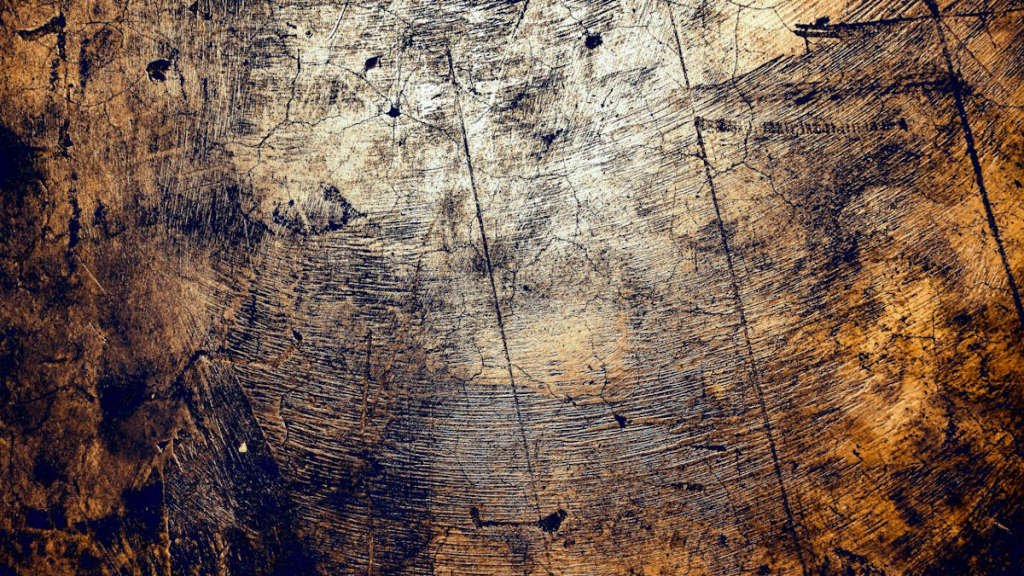
As we delve into the world of Grunge art, we are met with a raw and unfiltered beauty that captivates the soul. This art form, with its gritty aesthetic and rebellious spirit, speaks to the inner turmoil and complexities of human emotions. Through its rough textures, dark color palettes, and unconventional compositions, Grunge art challenges the norms and invites us to explore the depths of our inner selves.
Main Points:
- Grunge art is characterized by its raw and unfiltered beauty.
- It captures the inner turmoil and complexities of human emotions.
- The gritty aesthetic challenges the norms and invites introspection.

Origins of Grunge Art Movement
Grunge art originated in the 1980s as a subgenre of the alternative rock music scene in the Pacific Northwest region of the United States. Influenced by punk rock and heavy metal, grunge art was known for its raw and gritty aesthetic.
Key Characteristics of Grunge Art Movement:
- DIY Ethos: Grunge artists often embraced a “do it yourself” attitude, creating art in a raw and unpolished manner.
- Anti-Establishment Ideals: Grunge art was a form of rebellion against mainstream culture and traditional artistic norms.
- Emotional Expression: Grunge art frequently explored themes of angst, alienation, and disillusionment.
The grunge art movement gained mainstream visibility in the early 1990s, with bands like Nirvana and Pearl Jam popularizing the genre. The aesthetic of grunge art was characterized by its use of distressed textures, dark color palettes, and a sense of disheveled authenticity.
Although the grunge art movement has evolved over the years, its rebellious spirit and DIY ethos continue to inspire artists today. By embracing imperfection and authenticity, grunge art remains a powerful form of self-expression and cultural commentary.

Characteristics of Grunge Art Style
The Grunge art style emerged in the 1980s and gained popularity in the 1990s. It is known for its raw and gritty aesthetic that reflects a sense of rebellion and nonconformity. Here are some key characteristics of Grunge art:
1. Distressed Textures
Grunge art often features distressed textures, such as smudges, scratches, and stains. These imperfections give the artwork a sense of age and history, adding depth and dimension to the piece.
2. Dark and Moody Color Palette
The color palette of Grunge art is typically dark and moody, with shades of black, gray, brown, and muted tones. These colors help to create a sense of melancholy and nostalgia in the artwork.
3. Collage and Layering
Grunge art frequently incorporates collage and layering techniques, combining various elements such as photographs, newspaper clippings, and other found objects. This creates a visually rich and complex composition that invites viewers to explore the artwork further.
| Distressed Textures | Dark and Moody Color Palette | Collage and Layering |
|---|---|---|
| Imperfections like smudges, scratches, and stains | Shades of black, gray, brown, and muted tones | Combining various elements to create a visually rich composition |
Overall, Grunge art style is a reflection of the counterculture movement, embracing imperfections and celebrating the beauty of decay. It challenges traditional notions of beauty and perfection, inviting viewers to see the world through a different lens.
Impact of Grunge Art on Contemporary Culture
When we think of the 90s, many of us are transported back to a time of flannel shirts, ripped jeans, and a rebellious, anti-establishment attitude. This iconic era was heavily influenced by grunge art, a raw and gritty form of artistic expression that emerged from the underground music scene in Seattle.
Grunge art was characterized by its DIY aesthetic, bold colors, and use of unconventional materials. Artists like Kurt Cobain, Courtney Love, and Eddie Vedder were not only creating music that spoke to a generation, but they were also creating visual art that captured the angst and disillusionment of the times.
Fast forward to today, and we can still see the impact of grunge art on contemporary culture. From fashion runways to street art, the influence of grunge can be seen in the edgy and unconventional designs that are popular today. Brands like Urban Outfitters, Volcom, and Vans continue to draw inspiration from the grunge movement, creating clothing and accessories that pay homage to this rebellious aesthetic.
The music of the 90s
But it’s not just fashion that has been influenced by grunge art. The music of the 90s also continues to shape contemporary culture, with bands like Nirvana, Pearl Jam, and Soundgarden still being celebrated and emulated by new generations of musicians. The raw emotion and authenticity that characterized grunge music have left a lasting impact on the music industry as a whole.
In conclusion, the impact of grunge art on contemporary culture cannot be understated. Its DIY spirit, raw aesthetic, and rebellious attitude continue to inspire artists, musicians, and designers to push boundaries and challenge the status quo. As we continue to look back on the 90s with nostalgia, it’s clear that the influence of grunge art is alive and well in our modern world.

Famous Grunge Artists and their Works
Grunge music emerged in the late 1980s and early 1990s as a subgenre of alternative rock. Known for its raw and gritty sound, grunge became a prominent musical movement, particularly in the Pacific Northwest region of the United States. Let’s take a closer look at some of the most famous grunge artists and their iconic works:
Nirvana
Nirvana was undoubtedly one of the most influential grunge bands of all time. Formed in 1987 by lead vocalist and guitarist Kurt Cobain, bassist Krist Novoselic, and drummer Dave Grohl, the band achieved massive success with their second studio album, Nevermind. Songs like “Smells Like Teen Spirit” and “Come As You Are” became anthems of a generation and solidified Nirvana’s place in music history.
Pearl Jam
Pearl Jam was another prominent figure in the grunge movement. Led by vocalist Eddie Vedder, the band gained widespread recognition with their debut album, Ten. Tracks such as “Jeremy” and “Alive” showcased Pearl Jam’s signature sound, characterized by powerful guitar riffs and emotionally charged lyrics.
Soundgarden
Soundgarden was formed in Seattle in 1984 and quickly rose to fame within the grunge scene. Fronted by the charismatic Chris Cornell, the band’s breakthrough album, Superunknown, featured hits like “Black Hole Sun” and “Spoonman.” Soundgarden’s fusion of heavy rock and psychedelic influences set them apart from their peers.
Alice in Chains
Alice in Chains brought a darker and heavier edge to the grunge genre. With haunting vocal harmonies between singers Layne Staley and Jerry Cantrell, the band’s albums, including Dirt and Jar of Flies, explored themes of addiction and despair. Standout tracks like “Rooster” and “Man in the Box” showcased Alice in Chains’ unique sound.
Mudhoney
Mudhoney may not have achieved the same level of commercial success as some of their peers, but they were instrumental in shaping the grunge sound. Known for their energetic live performances, the band’s debut EP, Superfuzz Bigmuff, influenced countless other grunge acts. Songs like “Touch Me, I’m Sick” and “In ‘N’ Out of Grace” encapsulate Mudhoney’s raw and unapologetic approach to music.
Table of Famous Grunge Artists and Their Works
| Artist | Iconic Work |
|---|---|
| Nirvana | Nevermind |
| Pearl Jam | Ten |
| Soundgarden | Superunknown |
| Alice in Chains | Dirt |
| Mudhoney | Superfuzz Bigmuff |
In conclusion, the grunge movement left an indelible mark on the music industry, with artists like Nirvana, Pearl Jam, Soundgarden, Alice in Chains, and Mudhoney shaping the sound of a generation. Their influential works continue to resonate with music fans around the world.

Evolving Trends in Grunge Art Scene
As the art world continues to evolve, one particular style that has been gaining traction in recent years is grunge art. This raw and edgy form of artistic expression has roots in the underground music scene of the 1980s and 1990s, and has since found its way into galleries and museums around the world. Grunge art is characterized by its rebellious and nonconformist nature, often using unconventional materials and techniques to create striking and thought-provoking pieces.
The Origins of Grunge Art
The origins of grunge art can be traced back to the grunge music movement that emerged in Seattle in the late 1980s. Musicians like Nirvana, Pearl Jam, and Soundgarden were at the forefront of this movement, and their music reflected a sense of angst and disillusionment that was also reflected in the art of the time. Grunge art drew inspiration from the music scene, with many artists using DIY techniques and incorporating elements of grunge fashion into their work.
Over the years, grunge art has continued to evolve and adapt to the changing cultural landscape. While it still maintains its gritty and grungy aesthetic, artists are now experimenting with new mediums and styles, pushing the boundaries of what grunge art can be. From gritty street art to sophisticated gallery installations, grunge art continues to captivate audiences and challenge traditional notions of beauty and aesthetics.
The Future of Grunge Art
Looking ahead, it’s clear that grunge art will continue to be a force to be reckoned with in the art world. As society becomes increasingly disillusioned with mainstream culture, the raw and unapologetic nature of grunge art will only become more relevant. With a new generation of artists taking up the mantle, we can expect to see even more daring and provocative works that push the boundaries of what art can be.
Whether you’re a fan of grunge art or new to the scene, there’s no denying the impact that this raw and rebellious style has had on the art world. Keep an eye out for upcoming exhibitions and shows featuring grunge art, and prepare to be inspired by the bold and uncompromising vision of these talented artists.

Conclusion
In conclusion, it is evident that the undefined genre of Grunge art has made a significant impact on the art world. With its raw and expressive style, Grunge art challenges traditional aesthetic norms and invites viewers to explore the complexities of human emotion and experience. As artists continue to push the boundaries of what is considered art, Grunge art remains a powerful and thought-provoking movement that is sure to inspire future generations of creatives.
Frequently Asked Questions
What is grunge art?
Grunge art is a style of artwork characterized by its rough, raw, and gritty aesthetic. It often incorporates elements such as distressed textures, bold typography, and a muted color palette.
Who are some famous grunge artists?
Some famous grunge artists include Banksy, Shepard Fairey, and Jean-Michel Basquiat.
How can I create my own grunge art?
To create your own grunge art, you can experiment with techniques like distressing paper, using rough brush strokes, and incorporating found objects into your artwork.
What tools are commonly used in grunge art?
Common tools used in grunge art include textured brushes, ink splatters, collage materials, and digital editing software for creating distressed effects.
Where can I find inspiration for grunge art?
You can find inspiration for grunge art in urban environments, street art, music, pop culture, and by exploring themes of rebellion, decay, or nostalgia.
